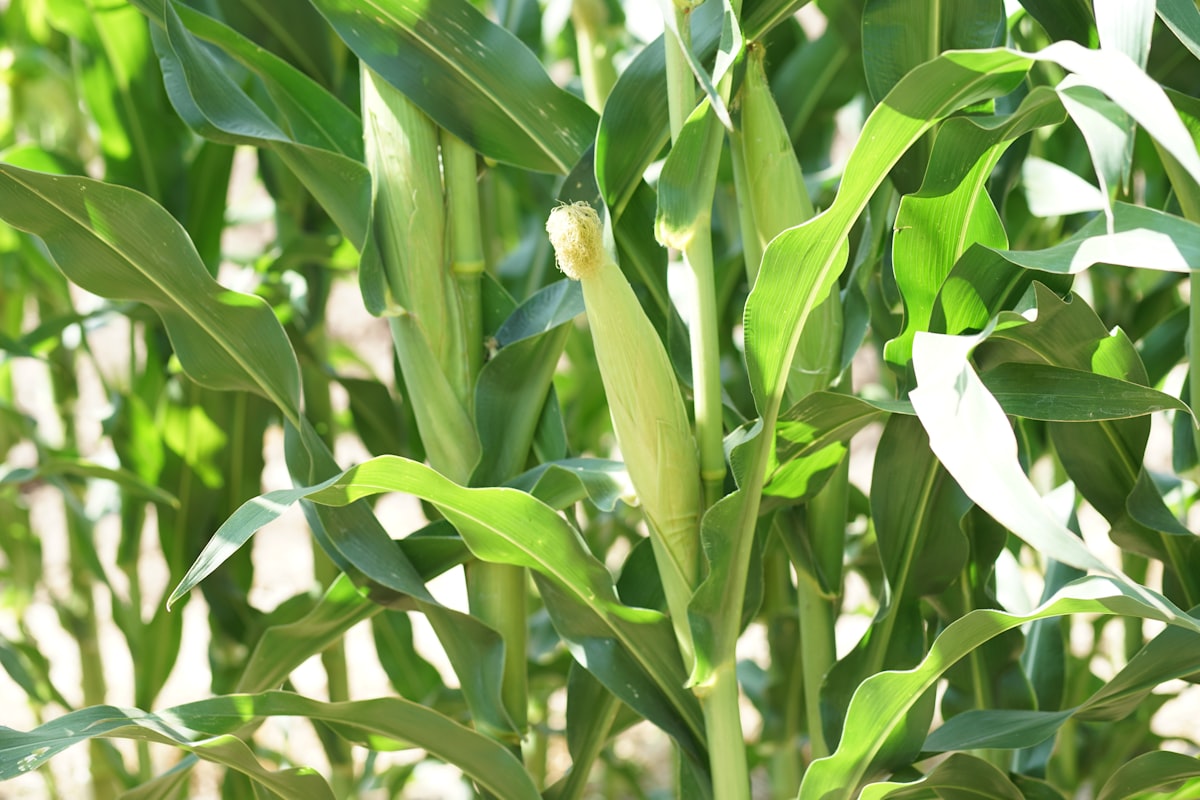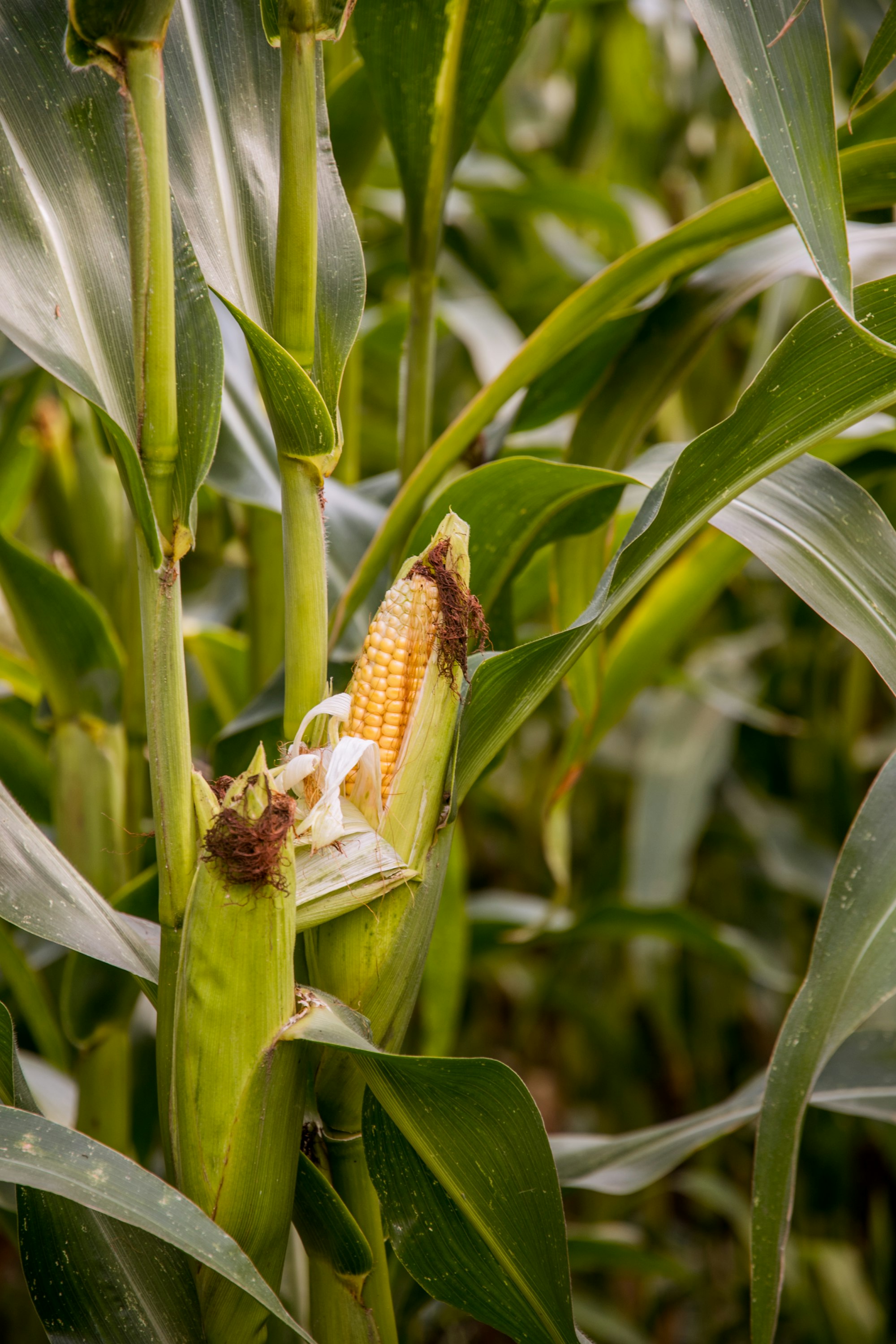How to Grow Corns
Growing corn in your home garden can be an enjoyable hobby and a great way to provide fresh, tasty produce for your table. With the right preparation and care, anyone can cultivate this versatile crop in their backyard without the need for a massive cornfield.

Table of Contents
Before planting, you must know the requirements for successful corn growth: rich, well-drained soil with a neutral pH and temperatures above 50 degrees Fahrenheit or 10 degrees Celsius.
By meeting these conditions and following proper planting techniques, you'll be on your way to enjoying delicious, homegrown corn in no time.
About Corn Plant
Corn, scientifically known as Zea mays, is a versatile and vigorous plant in various varieties, including sweet corn, which has a higher sugar content and is popular for home gardens.
It is characterized by long stalks with large ears containing rows of nutritious kernels.
There are numerous corn varieties, each offering unique flavors, colors, and growth patterns.
When selecting a variety to grow in your garden, consider factors like climate, soil type, and your intended use for the corn.
Sweet corn, for example, is excellent for eating fresh off the cob, while other varieties may be better suited for canning, freezing, or processing into cornmeal.
Growing Corns
To grow corn in your garden, first choose a suitable corn variety for your region.
Ensure your soil is well-draining with a pH of 5.8 to 7.0 and rich in organic matter, as corn, or Zea mays, thrives in such conditions.
Next, prepare your garden by tilling the soil and adding organic matter like compost or well-rotted manure.
Sow seeds directly into your vegetable garden in rows 2-3 feet apart when planting corn.
Place the seeds about 1 inch deep for early plantings; plant them up to 2 inches deep in the hotter months.
Corn will typically germinate within ten days, and planting at this depth ensures optimal pollination for a full, juicy harvest.

Caring for Corn Plant
Sun and Temperature
Corn requires full sun and warm soil temperatures for optimal growth.
Ensure your corn is planted in an area that receives at least 6-8 hours of sunlight daily. Soil temperatures should ideally be between 60-90°F (15-32°C).
Water and Humidity
Consistent moisture is essential for corn growth. Water your corn plants regularly, providing about one inch per week.
Ensure the soil remains moist but not waterlogged, as proper drainage is essential for healthy corn roots.
Soil
Corn thrives in fertile, well-drained soil with a pH of 6.0 and 6.8. Before planting, test the soil's pH and amend it to achieve the appropriate level.
Proper soil temperatures will encourage germination and improve moisture retention.
Fertilizer
Utilize a balanced fertilizer, emphasizing phosphorus and potassium, to promote strong root development and stalk growth.
Apply the recommended fertilizer when planting and again when the corn plants are about knee-high.
Repotting
Transplanting corn is generally not advised, as corn roots can be sensitive to disturbance.
Instead, plant corn seeds directly in the final growing location, ensuring adequate space for growth and proper soil conditions.
Pruning and Propagation
Pruning is unnecessary for corn growth, as the plant naturally develops multiple stalks from a single seed.
Plant additional seeds in suitable soil conditions to propagate corn, following proper planting guidelines for optimal growth.
Troubleshooting Plant Problems
Growing Problems
During corn's growth, ensure proper soil temperature and consistent watering to avoid delays in germination and development.
Protect your corn from frost by planting after the frost-free period and ensure they receive full sun for optimal growth.
Pests and Diseases
Watch for common pests like cutworms and diseases such as corn smut.
You can control these threats by implementing biological or chemical solutions and inspecting your crops for signs of damage.
Companion Planting
Introduce certain plants with your corn to enhance growth, repel pests, and improve your corn's overall yield.
Examples of beneficial companion plants are beans, squash, and sunflowers, which complement each other and help keep harmful elements at bay.

Conclusion
Growing corn can be a rewarding addition to your vegetable garden if you provide the proper conditions to thrive.
Select the appropriate corn variety for your region and ensure your planting site has well-drained, loamy soil with a slightly acidic pH and plenty of sunlight.
When planting, space your corn seeds with adequate room for growth, and keep a consistent watering and fertilizing schedule to promote a bountiful yield.
Monitor your plants for possible pests, diseases, or environmental issues, and educate yourself on managing them effectively.
Once your corn has matured, enjoy harvesting and incorporating this versatile and tasty vegetable into your culinary repertoire.
Frequently Asked Questions
What are the best planting techniques for corn?
Plant corn kernels in modules or 3.5-inch pots filled with multipurpose compost for optimal growth, sowing them about 0.5 inches deep. Germination typically occurs after ten days, allowing you to carefully transplant seedlings into your garden.
How can I effectively grow corn in containers?
Choose a large container (at least 12 inches in diameter) with adequate drainage. Fill it with well-draining, fertile soil, and plant your corn seeds about 0.5 inches deep. Monitor water levels regularly, ensuring the soil remains moist but not excessively wet.
How many seeds should be planted in each hole?
Plant two seeds per hole or pot, sowing them about 0.5 inches deep. After germination, if both seeds sprout, carefully remove the weaker seedling to allow the stronger one to thrive.
What are the crucial stages of corn growth to be aware of?
There are four essential stages: germination, vegetative growth, pollination, and maturity. Focus on providing adequate water, nutrients, and pest control for healthy corn growth during each phase.
How should I care for corn seedlings?
Keep the soil moist, especially during germination and early growth, and provide adequate plant support. Be vigilant about pest control and remove any weeds competing with the seedlings for nutrients and sunlight.
What are the optimal planting dates for corn in different regions?
The optimal planting dates depend on the local climate and the risk of frost. In general, plant corn after the last frost, when soil temperatures have reached at least 60°F (15°C). Determine the appropriate planting time for your area by researching the average frost dates and considering your specific growing conditions.



